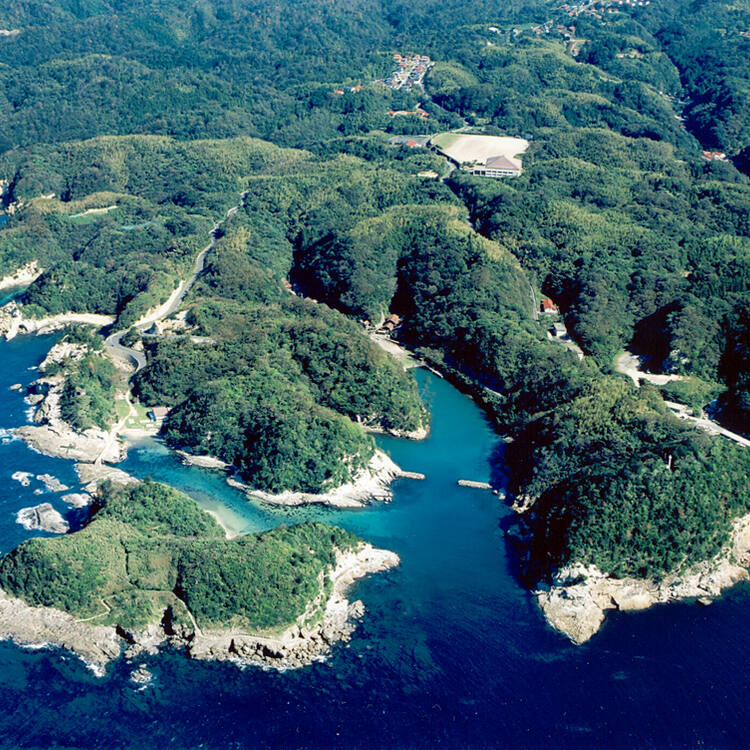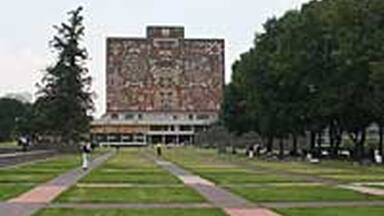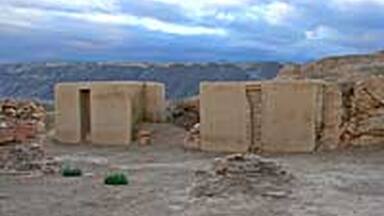Iwami Ginzan Silver Mine and its Cultural Landscape
Iwami Ginzan Silver Mine and its Cultural Landscape
The Iwami Ginzan Silver Mine in the south-west of Honshu Island is a cluster of mountains, rising to 600 m and interspersed by deep river valleys featuring the archaeological remains of large-scale mines, smelting and refining sites and mining settlements worked between the 16th and 20th centuries. The site also features routes used to transport silver ore to the coast, and port towns from where it was shipped to Korea and China. The mines contributed substantially to the overall economic development of Japan and south-east Asia in the 16th and 17th centuries, prompting the mass production of silver and gold in Japan. The mining area is now heavily wooded. Included in the site are fortresses, shrines, parts of Kaidô transport routes to the coast, and three port towns, Tomogaura, Okidomari and Yunotsu, from where the ore was shipped.
Description is available under license CC-BY-SA IGO 3.0
Mine d’argent d'Iwami Ginzan et son paysage culturel
Le site est un ensemble de montagnes riches en minerai d’argent qui s’élève à 600 m d’altitude dans le sud-ouest de l’île de Honshu et qui est entrecoupé de profondes vallées fluviales. On y trouve les vestiges archéologiques de vastes mines, de sites de fonte et de raffinage, ainsi que des peuplements miniers en usage du XVIe au XXe siècle. Des routes permettaient d’acheminer le minerai d’argent jusqu’à la côte et aux ports d’où il partait pour la Corée et la Chine. Les mines contribuèrent de façon substantielle au développement économique global du Japon et de l’Asie du Sud-Est aux XVIe et XVIIe siècles. Elles donnèrent une impulsion à la production en masse d’argent et d’or au Japon. La région minière est aujourd’hui très boisée. On y trouve des forteresses, des sanctuaires, des tronçons des routes de transport de Kaidô vers la côte, ainsi que trois villes portuaires Tomogaura, Okidomari et Yunotsu d’où partait le minerai.
Description is available under license CC-BY-SA IGO 3.0
منجم إيوامي جينزان للفضة ومشهده الثقافي
الموقع عبارة عن مجموعة من الجبال الغنية بركاز الفضة في الجنوب الغربي من جزيرة هونشو يبلغ ارتفاعها 600 متر، تتخلله وديان نهرية عميقة. فيه معالم أثرية لمناجم واسعة، ومواقع للسبك والتكرير، ومساكن منجمية أوت العمال بين القرنين السادس عشر والعشرين. وكانت شبكة من الطرقات تسمح بنقل ركاز الفضة نحو الساحل والمرافئ حيث كان يشحن باتجاه كوريا والصين. ساهمت المناجم بشكل أساسي في تنمية اقتصاد اليابان وجنوب شرق آسيا عموماً خلال القرنين السادس عشر والسابع عشر، وأعطت دفعاً لإنتاج الفضة والذهب على صعيد واسع في اليابان. منطقة المناجم مكسوة اليوم بالغابات وتتخللها القلاع والمعابد وأجزاء من طرق المواصلات بين كايدو والساحل، إضافة إلى ثلاث مدن مرفئية هي توموغاورا وأوكيدوماري ويونوتسو حيث كان يشحن ركاز الفضة.
source: UNESCO/CPE
Description is available under license CC-BY-SA IGO 3.0
石见银山遗迹及其文化景观
位于本州岛西南部的石见银山遗迹是一组山脉,海拔600米,被深深的河谷截断,以大型矿藏、熔岩和优美的地貌为主,是16世纪至20世纪开采和提炼银子的矿山遗址。这一带还有用来将银矿石运输至海岸的运输路线,以及通往韩国和中国的港口城镇。通过运用尖端技术提炼出来的优质白银和开采到的大量白银,大大促进了16世纪至17世纪日本和东南亚经济的整体发展,促进了日本白银和黄金的大规模生产。矿山现在被浓密的森林所覆盖。遗址上还建有堡垒、神龛、部分山道运输线以及三个运输银矿的港口城镇:Tomogaura、Okidomari和Yunotsu。
source: UNESCO/CPE
Description is available under license CC-BY-SA IGO 3.0
Серебряные копи Ивами Гинзан
Этот объект представляет собой горный массив, богатый минералами серебра, залегающими на высоте 600 метров. Он расположен в юго-западной части острова Хонсю и интересен глубокими речными долинами. Здесь сохранились остатки копей, плавильных и очистных сооружений, шахтерских поселков, относящихся к периоду с XVI по XX вв. От копей проложены дороги, по которым серебряная руда доставлялась до побережья и портов и затем отправлялась в Корею и Китай. Эти копи сыграли особенно значительную роль в экономическом развитии Японии и Юго-Восточной Азии в XVI и XVII веках, дав толчок массовому производству серебра и золота в Японии. Сегодня весь район густо зарос лесом, но еще сохранились следы укреплений, святилищ, участки дороги от Кайдо к побережью, а также три портовых поселка Томогаура, Окидомари и Юноцу, откуда отправляли руду.
source: UNESCO/CPE
Description is available under license CC-BY-SA IGO 3.0
Minas de plata de Iwami Ginzan y su paisaje cultural
Formado por un conjunto de montañas surcadas por valles profundos y ricas en yacimientos argentíferos que se yerguen a 600 metros de altura, este sitio posee vestigios arqueológicos de vastas minas, fundiciones, fábricas de refinado y asentamientos mineros de los siglos XVI al XX, así como de una red s viaria por la que se transportaba el mineral de plata hasta las ciudades portuarias de la costa para ser exportado a Corea y China. Estas minas contribuyeron sustancialmente al desarrollo económico del Japón y el Asia Sudoriental en los siglos XVI y XVII, impulsando la producción masiva de oro y plata en el archipiélago nipón. La antigua zona minera esta hoy cubierta de densos bosques. El sitio posee también fortalezas, santuarios y tramos de carreteras que van desde Kaidô hasta el litoral, y comprende las tres ciudades portuarias de Tomogaura, Okidomari y Yunotsu, donde se embarcaba el mineral.
source: UNESCO/CPE
Description is available under license CC-BY-SA IGO 3.0
石見銀山遺跡とその文化的景観
source: NFUAJ
Zilvermijn en cultuurlandschap van Iwami Ginzan
Source: unesco.nl
Outstanding Universal Value
Iwami Ginzan Silver Mine pioneered the development of silver mines in pre-Modern Asia. It had contributed to exchange of values between East and West by achieving the large-scale production of high quality silver through the development of the Asian cupellation techniques transferred from China through Korea and the Japanese unique assemblage of numerous labor-intensive small businesses based upon manual techniques in the 16th century. The exceptional ensemble, consisting of mining archaeological sites, settlements, fortresses, transportation routes, and shipping ports represents distinctive land use related to silver mining activities. As the resource of silver ore was exhausted, its production came to an end, leaving behind, in the characteristically rich nature, a cultural landscape that had been developed in relation to the silver mine.
Criterion (ii): During the Age of Discovery, in the 16th and early 17th centuries, the large production of silver by the Iwami Ginzan Silver Mine resulted in significant commercial and cultural exchanges between Japan and the trading countries of East Asia and Europe.
Criterion (iii): Technological developments in metal mining and production in Japan resulted in the evolution of a successful system based on small-scale, labor-intensive units covering the entire range of skills from digging to refining. The political and economic isolation of Japan during the Edo Period (1603 to 1868) impeded the introduction of technologies developed in Europe during the Industrial Revolution and this, coupled with the exhaustion of commercially viable silver-ore deposits, resulted in the cessation of mining activities by traditional technologies in the area in the second half of the 19th century, leaving the site with well-preserved archaeological traces of those activities.
Criterion (v): The abundant traces of silver production, such as mines, smelting and refining sites, transportation routes, and port facilities, that have survived virtually intact in the Iwami Ginzan Silver Mine Site, are now concealed to a large extent by the mountain forests that have reclaimed the landscape. The resulting relict landscape, which includes the surviving settlements of the people related to the silver production, bears dramatic witness to historic land-uses of outstanding universal value.
The elements of the property showing the original mining land-use system remain intact; the organic relationships among the individual elements exhibit the full expression of the mechanism of the original land-use system. They are a living part of the contemporary lives and livelihoods of the local society in unity with the abundant mountain forests and hence the integrity as a cultural landscape is maintained. The elements of the property that show the whole process ranging from silver production to shipment, in a good state of preservation and retain a high level of authenticity. In the mining settlements, there remains a group of traditional wooden buildings of 17th-20th century with careful maintenance, treatment, and repairs, retaining authenticity in terms of design, materials, techniques, functions, setting and environment.
The property and its buffer zone are adequately protected under the domestic laws and a municipal ordinance. A comprehensive management system for the whole property has been implemented under the strategic preservation and management plan. Monitoring measures are carried out annually.



